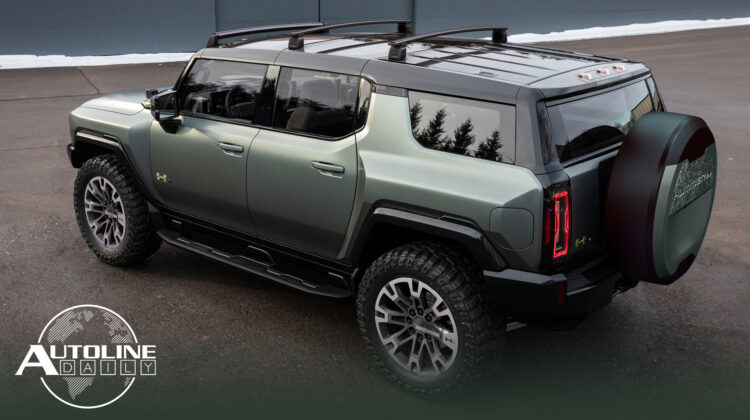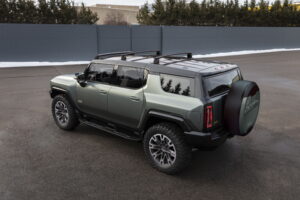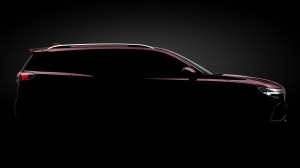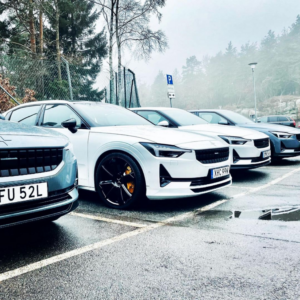


Follow us on social media:
Runtime: 11:06
0:07 Automakers Want U.S. Government to Help w/ Chip Shortage
0:45 VW Group Launching Vehicle-to-Grid Charging
2:32 More Hummer SUV Details
3:52 How to Calculate EV Efficiency
6:01 Buick Teases Long Wheelbase Envision for China
6:26 Polestar Hints at Performance Polestar 2
7:23 Lexus Running Unique Distracted Driver Ad Campaign
9:55 Magna Develops Driver Monitoring Rearview Mirror
Visit our sponsors to thank them for their support of Autoline Daily: BorgWarner, Bridgestone, Intrepid Control Systems and ZF.
This is Autoline Daily, the show dedicated to enthusiasts of the global automotive industry.
AUTOMAKERS WANT U.S. GOVERNMENT TO HELP WITH CHIP SHORTAGE
In the U.S., automakers want the federal government to help to help deal with the global semiconductor shortage. The Alliance of Automotive Innovation, which represents most major automakers, is asking the Commerce Department to help fund chip production in the U.S. for the auto industry. It warns that the shortage could cost automakers nearly 1.3 million vehicles in lost production this year and the disruption could last another six months. As we reported last week, new car inventory levels are plunging. And that means prices will go up.
VOLKSWAGEN LAUNCHING VEHICLE-TO-GRID CHARGING
Starting next year, Volkswagen’s electric vehicles will have bidirectional charging capability. Also known as “vehicle-to-grid”, the technology allows power to be sent back to the grid while charging to help balance the grid when needed. Owners could even be compensated by the electric utility for use of their battery pack. VW confirmed that all of its EVs built on the MEB platform will be equipped with the system starting in 2022. And not just the VW brand. Audi, Skoda and SEAT’s EVs will have the capability too. Not many EVs currently have the feature, the most notable one is the Nissan Leaf. But more are coming, the new Hyundai Ioniq 5 will have it and Tesla plans on adding it to its vehicles in the future.
And be sure to join us this Thursday for Autoline After Hours. Our special guest is Matt Brueggeman, the CEO of Flux Mopeds. Those things are electric and he wants to blow the market for micro mobility wide open. Join John and Gary to find out how he wants to do that.
MORE HUMMER SUV DETAILS
After yesterday’s show, General Motors gave us more information about the SUV version of the Hummer EV. And Everything from the C-pillar rearward is different from the pickup. It has about the same approach angle as the truck, but the departure angle is over 10-degrees more. 49-degrees vs. 38.4-degrees for the truck. All-wheel-steering provides up to 10-degrees of rear wheel movement. The turning radius is only 35.4 feet, which is about 3 feet less than the Mustang Mach-E. It’s estimated to have 300-plus miles of range. Some of you may remember the truck is rated at 350-plus miles. But because the SUV has a shorter wheelbase of nearly 9-inches it has 20 battery modules instead of the truck’s 24. GM has still not released the kWh size of either battery. The NAV lets you download trail maps for off-roading and will tell you how much charge is needed to do the trail and still be able to get to the nearest charging station. They’re launching the SUV with a First Edition, which is already sold out, despite a price tag of $110,000.
HOW TO CALCULATE THE EFFICIENCY OF EVs
A comment from yesterday caught our eye. Lambo2015 says, “… Anyone can look at an ICE window sticker and know [what] city/Hwy and combined fuel economy numbers mean but many people will be confused by EV jargon…” I think we can help clear this up a little. In the U.S., the EPA lists MPGe, range and how many kilowatt hours will be used in 100 miles of driving. I’ll be honest, I don’t really ever look at MPGe. The other two are more useful. In terms of kwh per 100 miles driven, the most efficient EVs are right around 25 kWh per 100 miles. Less efficient ones are around 30 to 35 kWh/100 miles. So, that’s one way of looking at it. We prefer taking the EPA range and dividing by the size of the battery pack. That gives you miles per kilowatt hour, which is more akin to miles per gallon. For example, new Tesla Model 3 Long Ranges have 353 miles of range and an 82 kWh battery pack. When divided together that gives you 4.3 miles per kWh. And we think that’s one of, if not the, most efficient EV out there. Really, anything around 4 miles per kWh should be considered pretty darn efficient, at least right now. As we know, better batteries are coming. The same can be done with WLTP figures, but we like EPA because it’s closer to what you’ll see in the real world. But remember, just like an ICE, these figures can change with other factors, like temperature and driving behavior. It’s just something more of us are going to have to get used to, which will come as we all drive more EV miles. As that happens, EV buyers will care as much or as little about range and efficiency as they do about MPG when purchasing an ICE vehicle.
BUICK GETTING LONG WHEELBASE ENVISION IN CHINA
China is getting an all-new long-wheelbase version of the Buick Envision, called the Envision Plus. It’s about 2-inches longer than the current model, features GM’s new electrical architecture and will have an all-new propulsion system. Styling also looks similar to the new models that debuted earlier this year. That’s all we have to go on for now, but we’ll provide more details when we see them.
POLESTAR HINTS AT PERFORMANCE POLESTAR 2
Sticking in the realm of teases, Polestar’s CEO showed this picture on Instagram of what looks like a performance version of the Polestar 2. It sits lower, has bigger wheels and tires as well as Brembo brakes. Is there any upgrade to the base car’s dual motors that put out a combined 400 horsepower? We’ll have to wait and see.
LEXUS LAUNCHES DISTRACTED DRIVER CAMPAIGN
Lexus is running a safety campaign to get people to stop texting while they drive. It gathered a group of regular people to participate in making a video about distracted drivers. They started out by asking them if they text and how long they look at their phone.
“Probably one to two seconds.” “Two seconds at the most.” “A couple of seconds.”
But they’re wrong. Lexus says it takes an average of 4.6 seconds to read or send a text. And safety experts know that anything that takes your eyes off the road for more than 2 seconds is dangerous. At 55 miles an hour, you travel the length of a football field in 4.6 seconds.
So Lexus modified an NX with electrochromatic tinted glass which can go from transparent to opaque instantaneously. That way they could block the driver’s view for 4.6 seconds. But they didn’t tell the people this would happen.
The drivers were then challenged to take the vehicle on a course to see how well they would do.
“I’m going to crush it. I’m a good driver.” “I’m going to crush it too.”
After they crashed into so many obstacles on the course, Lexus asked them what they thought about texting and driving.
“That just changed my perspective. It was like me being on the phone and texting.” “You know being young it’s easy to think, like, we’re invincible.” “You’re literally playing with your life.” “I won’t be touching my phone–throwing it in the glove compartment.”
NHTSA estimates that distracted driving killed 3,142 people in the US in 2019, a 10% increase from 2018.
MAGNA DEVELOPS DRIVER MONITORING REARVIEW MIRROR
Maybe the solution are cameras that monitor driver attention, like Cadillac does with Super Cruise. But you don’t need a full blown system like Super Cruise to do a driver monitoring system. Magna just came out with a camera that’s integrated into the rear view mirror which alerts drivers when they take their eyes off the road for too long. Other suppliers like Gentex are working on this too, and driver monitoring cameras are likely to become very common. In fact they could even be mandated in the future.
But that’s it for today, thanks for watching.
Thanks to our partner for embedding Autoline Daily on its website: WardsAuto.com

John McElroy is an influential thought leader in the automotive industry. He is a journalist, lecturer, commentator and entrepreneur. He created “Autoline Daily,” the first industry webcast of industry news and analysis.









